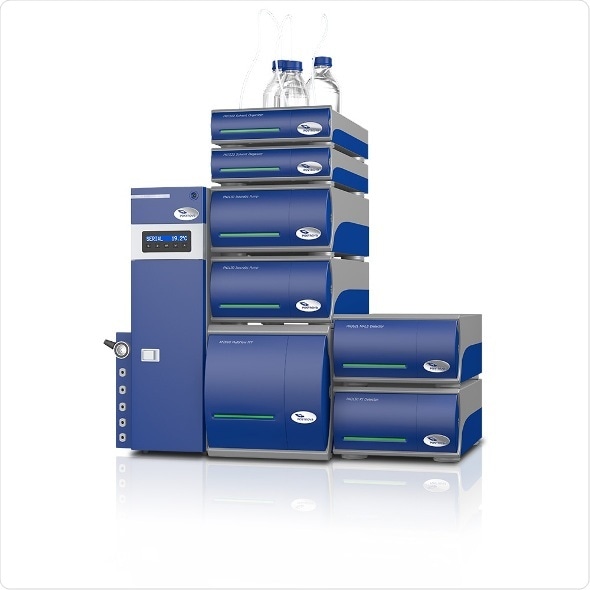Apr 27 2018
Postnova Analytics announce in a joint collaboration with the Department of Biosciences at the University of Helsinki (Finland), that Asymmetrical Flow Field-Flow Fractionation (AF4) was successfully employed for the purification of halophilic (extreme) viruses.

Viruses come in a wide range of shapes and sizes, of particular current interest to researchers are viruses that live in extreme conditions such as high salinity or elevated temperature. One challenge for studying these extreme viruses has been to identify an efficient separation technique which both purifies and maintains their infectious nature.
In a recently published paper, by the University of Helsinki and Postnova Analytics, the researchers report how they used a Postnova AF2000 system for purifying and studying extremophilic viruses in four morphotypes forms - lemon-shaped, tailed, tailless icosahedral and pleomorphic enveloped.
Experimental data is shown illustrating how the Postnova AF2000 system was applied to input samples of different purity including crude supernatants of infected cultures, polyethylene glycol-precipitated viruses and viruses purified by ultracentrifugation. All four virus morphotypes were successfully purified by the system. AF4 purification of culture supernatants or polyethylene glycol-precipitated viruses yielded high recoveries, and the purities were comparable to those obtained by the multistep ultracentrifugation purification methods. In addition, the researchers also demonstrate how they have successfully employed the Postnova AF2000 system as a rapid monitoring tool for virus production in slowly growing host cells living in extreme conditions.
The Postnova AF2000 is a high performance Asymmetrical Flow Field-Flow Fractionation (AF4) system for separation of proteins, macromolecules and nanoparticles. The system uses a gentle crossflow chromatography-like technique for size-based separation that does not use a solid stationary phase and the mobile phase composition is readily adjustable according to the sample needs. Offering gentle, high resolution separation of specimens up to 50 µm, the AF4 technique is shown in the paper to be highly suitable for virus purification.